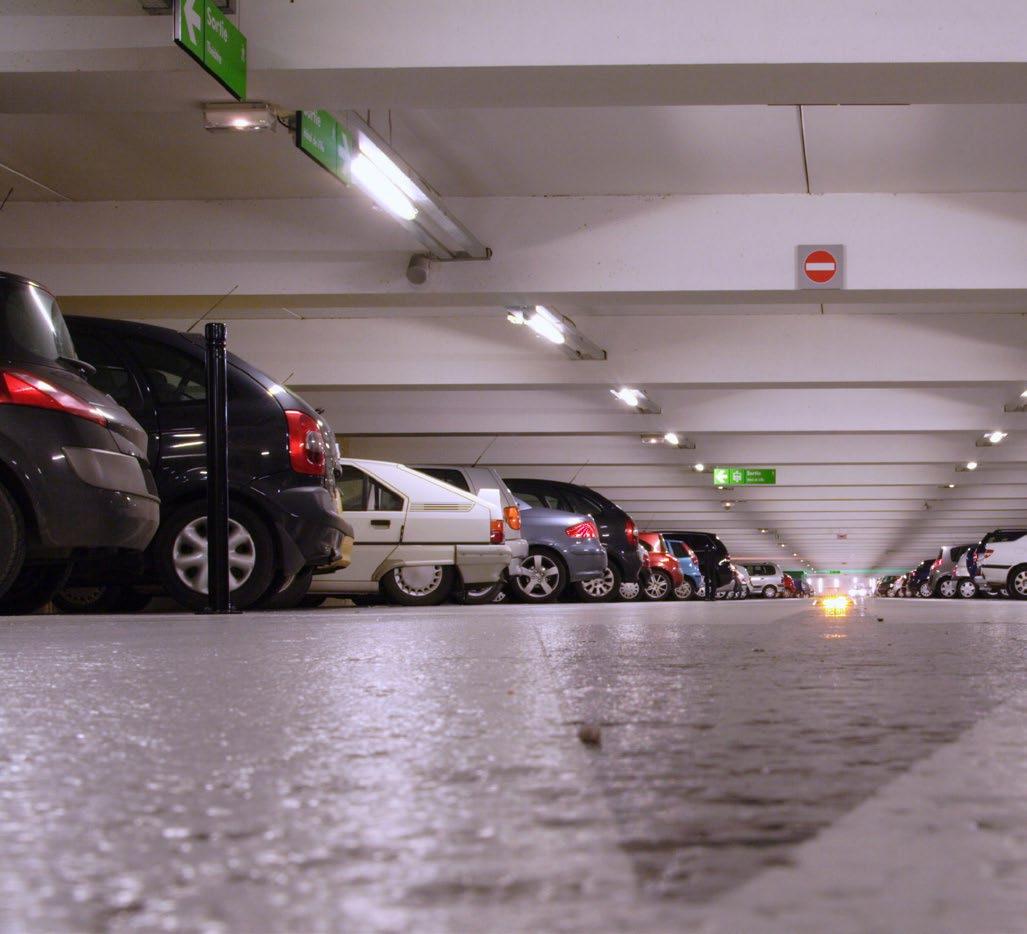
6 minute read
GETTING TO MACQUARIE PARK: TRANSPORT CHOICES
COVID-19 has changed the way people travel, with a sustained and significant reduction in the number of people commuting to the Park every day.
We have plotted trips taken in our area throughout the pandemic, including local journeys via active transport. In the early months of COVID-19 walking and cycling were the only modes to see an increase in Macquarie Park, while patronage on local roads, buses and Metro declined significantly.4
Advertisement
Trips by road returned faster than public transport. Congestion on some Macquarie Park roads now exceeds pre-pandemic levels even when many employees are still working remotely. This suggest more people are driving through rather than to Macquarie Park, for example on major routes like Lane Cove Road.
TRIPS BY MODE - MACQUARIE PARK
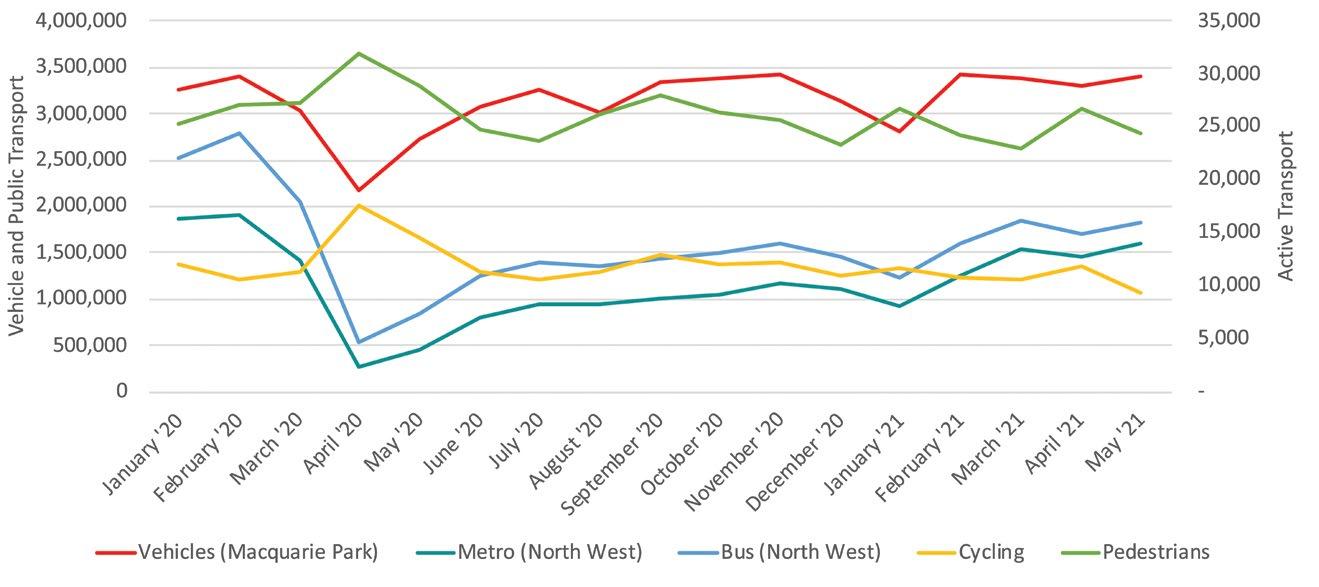
Public transport has experienced a slower return, and that recovery has been responsive to change. We saw an immediate behavioural response to Sydney’s COVID-19 “BBQs Galore outbreak” in April and May, with patronage levels declining again.
When asked what was informing their choice of travel mode, people in Macquarie Park told us they were least concerned about the availability of parking and the environmental impact of their commute – the same as in 2020.
The cost and duration of their commute had the most significant impact on how people chose to get to work, while concerns about hygiene have decreased since last year.
Duration of commute
Hygiene during commute
Availability of parking
Cost of commute $
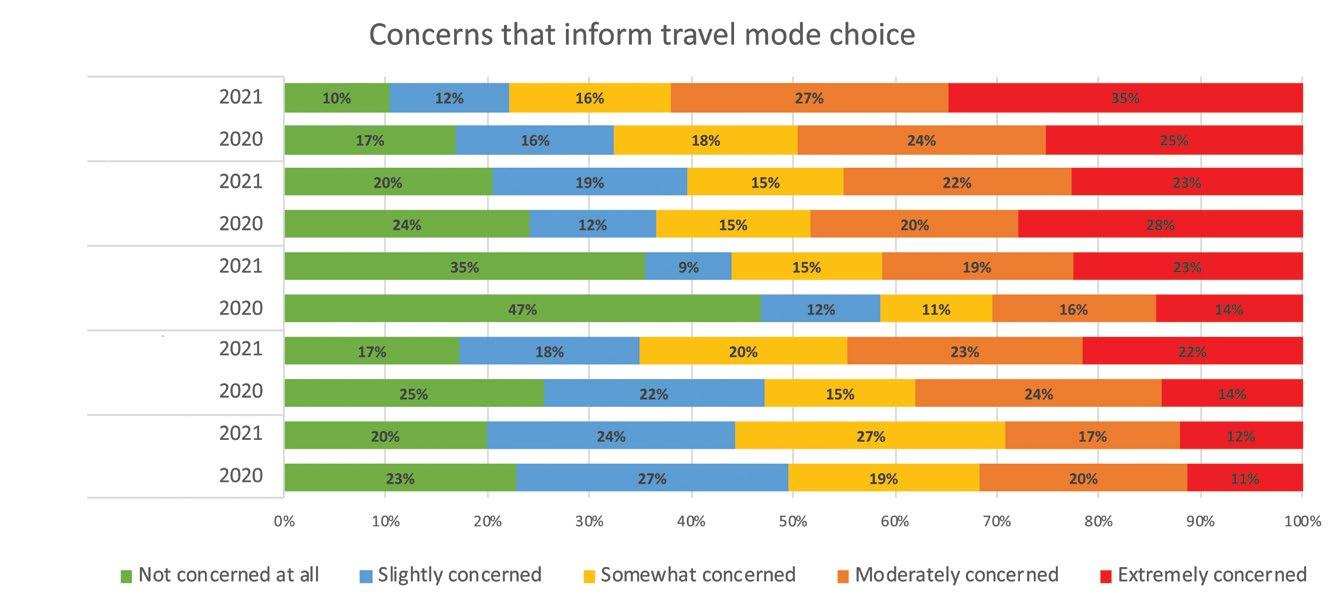
Environmental impact CONCERNS THAT INFORM TRAVEL MODE CHOICE
GETTING BACK ONBOARD: WHAT SARS SHOWS US
During the outbreak of SARS in Taiwan in 2003, daily announcements of cases correlated with decreasing trips on public transport. Over the following days passenger numbers would rise again, but did not return to previous levels.
Academics at Taiwan’s National Central University described this as “fresh fear” and “residual fear”, with “fresh fear” dissipating with an e-folding time of 28 days after each significant announcement of new infections.
“Residual fear” had a longer-lasting impact, with patronage still below previous levels some 271 days after the outbreak began, and after the epidemic and restrictions had passed. About 50% of daily trips were lost across the duration of the epidemic. Trip numbers returned to normal in 2004, but common use of face masks remained.5
CONCERN ABOUT HYGIENE ON PUBLIC TRANSPORT OVER TIME
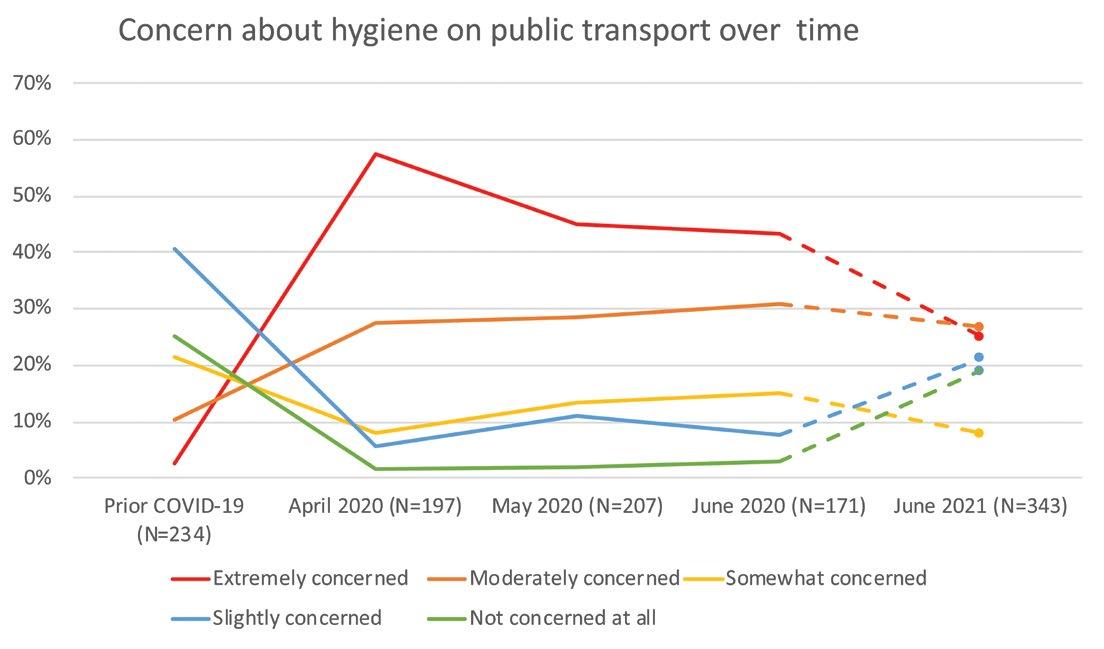

ӱ Case study: Keeping people moving
To ensure the whole transport network is safe for both customers and staff, Transport for NSW has been cleaning buses, trains, ferries and Metro more often during the pandemic.
On top of ‘business as usual’ cleaning, more than 2.4 million additional hours of cleaning have already taken place. An army of cleaners - an extra 1,814 workers – have also been added to the network.
Minister for Transport Andrew Constance said reassuring customers who relied on the network was important.
“Even though there were fewer customers on the network, we wanted to ensure those people who were still relying on public transport, such as frontline workers, would feel safe during the COVID-19 pandemic,” Mr Constance said.
“At the start of the pandemic we made a deliberate decision to maintain our high level of services to ensure essential workers could travel in a COVID safe way. To then enable more people to travel back to jobs we added thousands of extra services, particularly in peak hour, to allow for effective physical distancing.”
On metropolitan bus services enhanced cleaning is taking place across more than 4,000 vehicles, as well as bus stops, depots, passenger information displays and car parks.
All 13 stations on the Sydney Metro Northwest line are seeing additional cleaning services, including at Macquarie University, Macquarie Park and North Ryde stations. Each Metro train in service is wiped down on every trip – including the use of high-grade disinfectant.
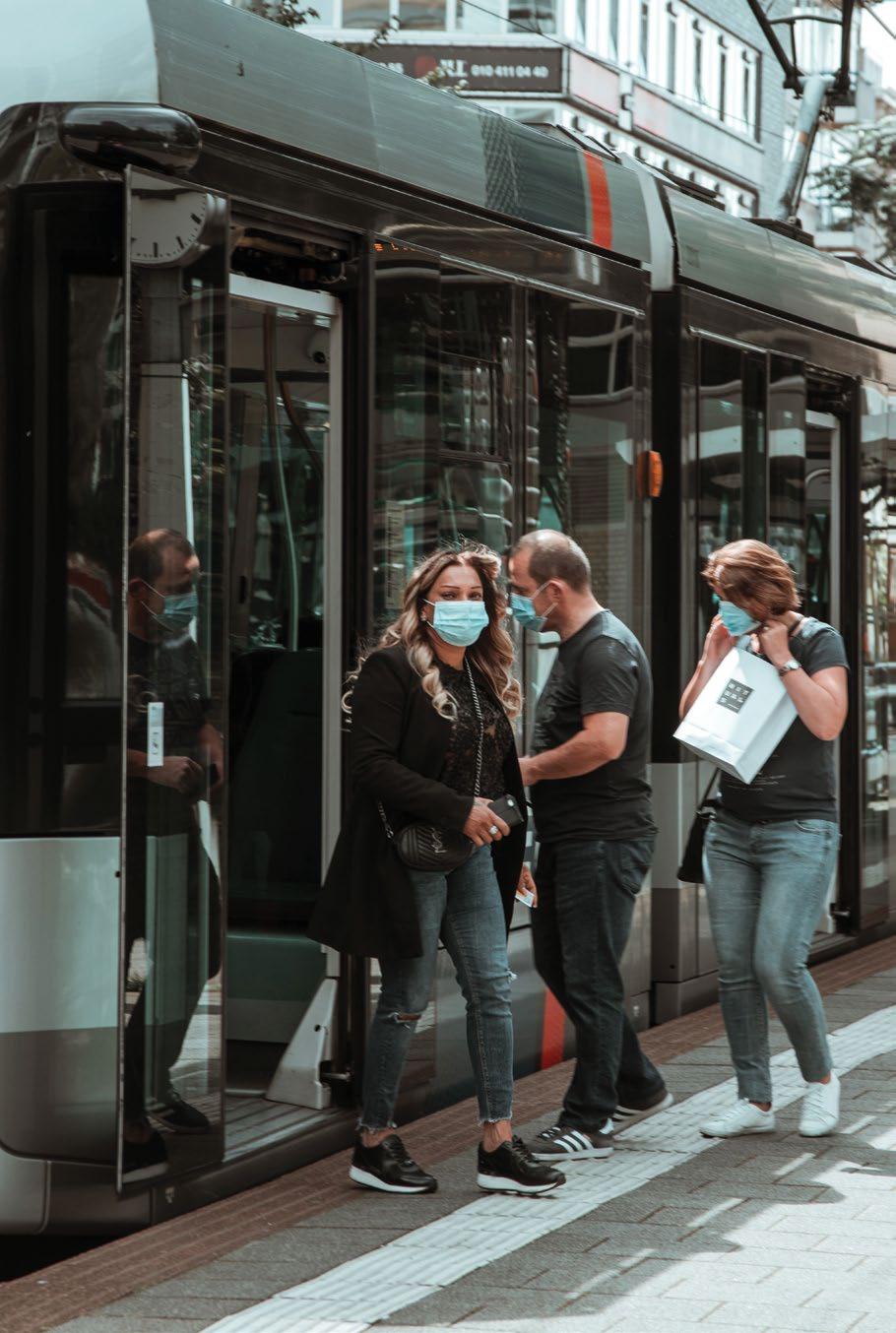
In the early months of the pandemic the reduction in trips on public transport in Macquarie Park correlated with increasing concerns about hygiene.
Since then extreme concern about hygiene has reduced, although it is still significant. The number of employees who feel safe and confident and are not concerned at all has increased, from less than 5% in 2020 to 19% in 2021.
TRAVEL MODE
We also asked employees how they travelled to work prior to COVID-19, how they intended to commute as restrictions lifted last year, and how they were intending to travel now, in 2021.
Employees told us they are now more likely to return to Macquarie Park by public transport. Intention to use the Metro recovered from a low of 21% of total mode share, back to the prepandemic 27%. Buses have not regained their popularity, and the intent to walk or cycle has decreased a little.
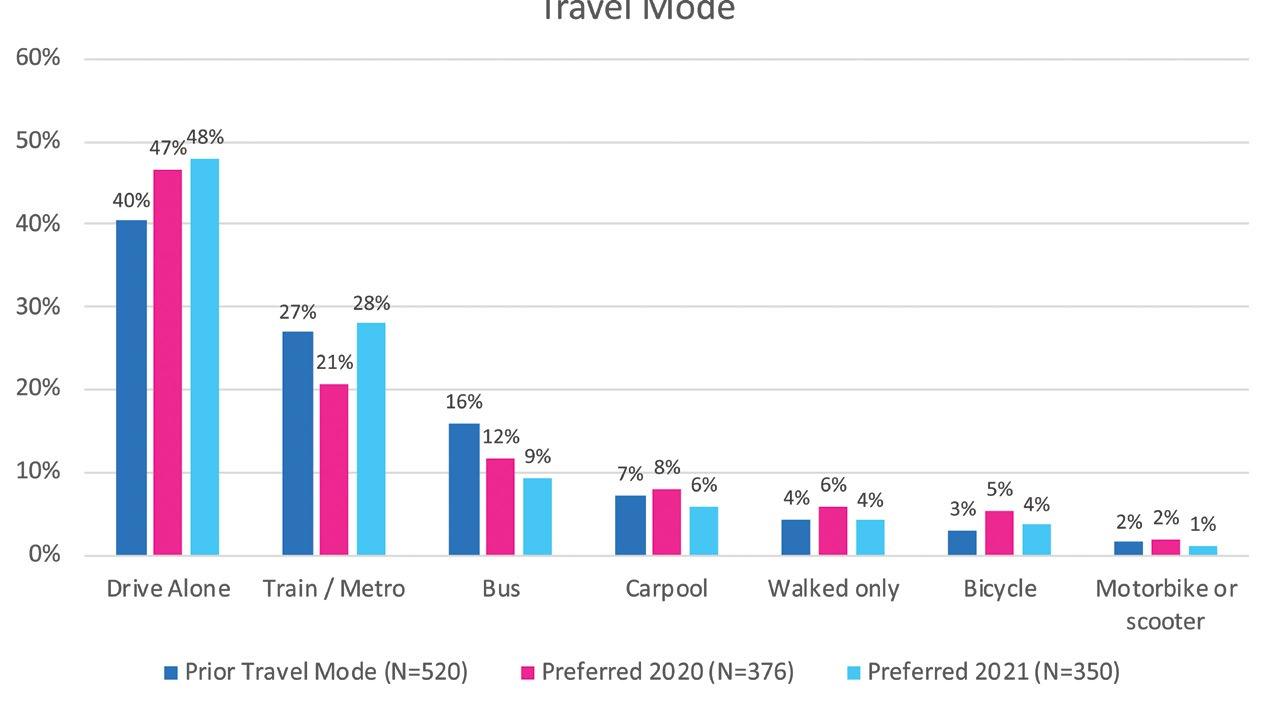
Of most concern, the intention to return to commuting by car has remained the same at 47%. This is 7% higher than pre-pandemic levels.
Prior to COVID-19 approximately 110,000 people came to work and study in Macquarie Park each day. In “like for like” terms, and if employees returned to their prior level of flexible working, a 7% increase in people driving alone would equal a daily addition of 7,700 more cars on our local roads.

SUNK COSTS DRIVE CONGESTION
People’s preference for private-vehicle travel throughout 2020 led to increased demand for second-hand vehicles. The Datium Insights-Moody’s Analytics Used Vehicle Price Index recorded prices for used vehicles rising 35% by the end of December 2020 compared to the previous year.
In a sign that people may turn more permanently towards private-vehicle travel, new car sales jumped by 11% in January 2021 compared to the same time last year.6
GETTING HERE: CONCLUSIONS
Employers can continue to play an important role supporting their employees to walk and cycle more by keeping their end of trip facilities clean and open. Additional support, like hiring a mobile bicycle mechanic and introducing a towel service, can also help boost employee engagement with the physical office.
An increase in demand for workplace car parking will present a challenge. Changes to tax legislation – confirmed by the ATO in June 20217 – will lead to the introduction of fringe benefit tax on some workplace parking in Macquarie Park for the first time.
More broadly, congestion exceeding pre-pandemic levels has the potential to act as a hand brake on productivity and the economic recovery in Macquarie Park.
Employers can help offset the impacts of congestion by continuing to ensure all employees are aware of their transport choices and by encouraging flexible and staggered start times to help reduce the need to travel during the peak.
